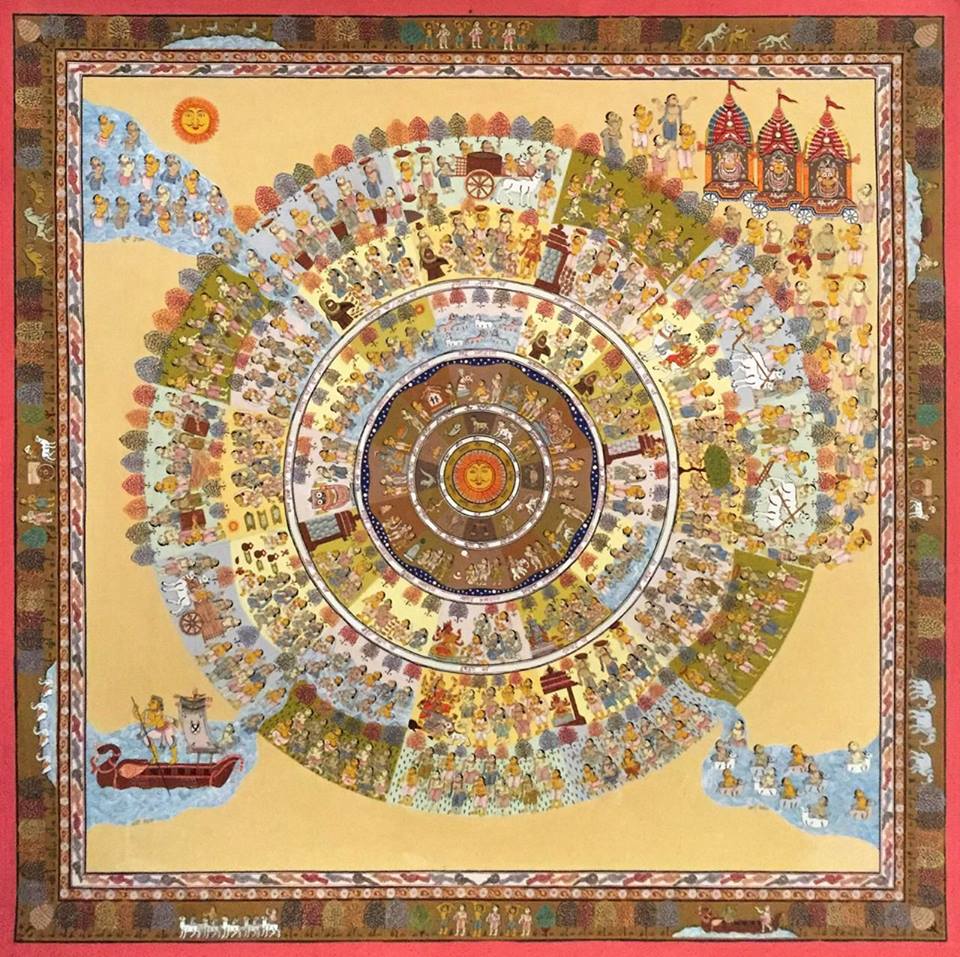At a time when modern culture is pushing our age old traditions to the brink, eminent pattachitra artist and national award winner Gangadhar Maharana of raghurajpur is leaving no stone unturned in preserving the rich cultural legacy. In a tête-à-tête with Chaitali Shome of Orissa Post, he threw light on rich history of the unique art and its future.
When did you set about in the field of Pattachitra?
I plunged into the world of this art when I was eight years old. Back then, I learned the art from my father Jaydev Maharana, who was both a Pattachitra and Ganjifa card artist. However, seeing my passion for the craft, he made me quit school very early. This was followed by my tutelage under eminent Pattachitra artist Jagannath Mohapatra. He taught me the finer details of this intricate work. Later, I became president of Raghunath Chitra Karigari Industrial Cooperative Society in Raghurajpur at the age of 24.
Brief us on the rich history of Pattachitra.
Pattachitra is an artwork made on paper. These works are based on Lord Jagannath, Balabhadra and Goddess Subhadra. These works are sold mainly to tourists visiting Puri. Paper Pattachitra is commonly known as Jatri Patti which is further categorised in the form of various shapes in Tikli, Panapatri, Nakhandia and Choukhuntaand among others.
Did an American tourist play a big role in the revival of this art?
Yes. The history of Pattachitra is quite interesting. Helena Jelly, an American tourist, was well versed with Odia language under the tutelage of Sadashiv Rath Sharma. She played a big role in Pattachitra’s revival by announcing a competition among craftsman. Winner of the competition was awarded Rs 15 at that time. The first and second runner-up received Rs 10 and Rs 5 respectively. She asked artistes to paint and draw tigers, elephants, horses and deer on earthen plates. Raghurajpur artistes won the competition.
What makes your work more popular than others?
I often depict our religion and rituals on Pattachitra. I thought of making paintings for home décor much later. My first painting of this genre was a work on time from morning to night. I received a national award in 2012 from President Pranab Mukherjee for this piece. Another Pattachitra Rutu Chakra was quite famous as well which was sold for Rs 1,40,000.
What are the tools used in this art form?
Tentuli (Tamarind) seeds are crushed and soaked in water for a whole night. It’s then cooked in a bowl to prepare glue. The glue made out of these seeds are drained and put on a clean cotton cloth. Another cloth is put over it which is then stretched and dried in sun. This gives it the shape of a canvas. White Khadi Pathar dust is then mixed in tamarind glue and smeared on each side of the canvas and dried in sun. A broken piece of Silapua is used to polish the canvas. Then, Chikan Barada or Silapua of Muguni stone is used to polish the canvas once again. Different sizes are then cut out of it to prepare various dimensions of Pattachitra.
What are the accolades you have received?
Apart from the national award, I have received Kalamani award in 2014 from the then governor of Haryana Jagannath Pahadia.
Will the art form thrive in future?
Indian culture in general and Odisha’s in particular is quite rich. Pattachitra will thrive until Lord Jagannath is there. However, it’s the sacred duty of a Guru to attract students towards Pattachitra. I want to make a Pattachitra on Swacha Bharat in the near future.